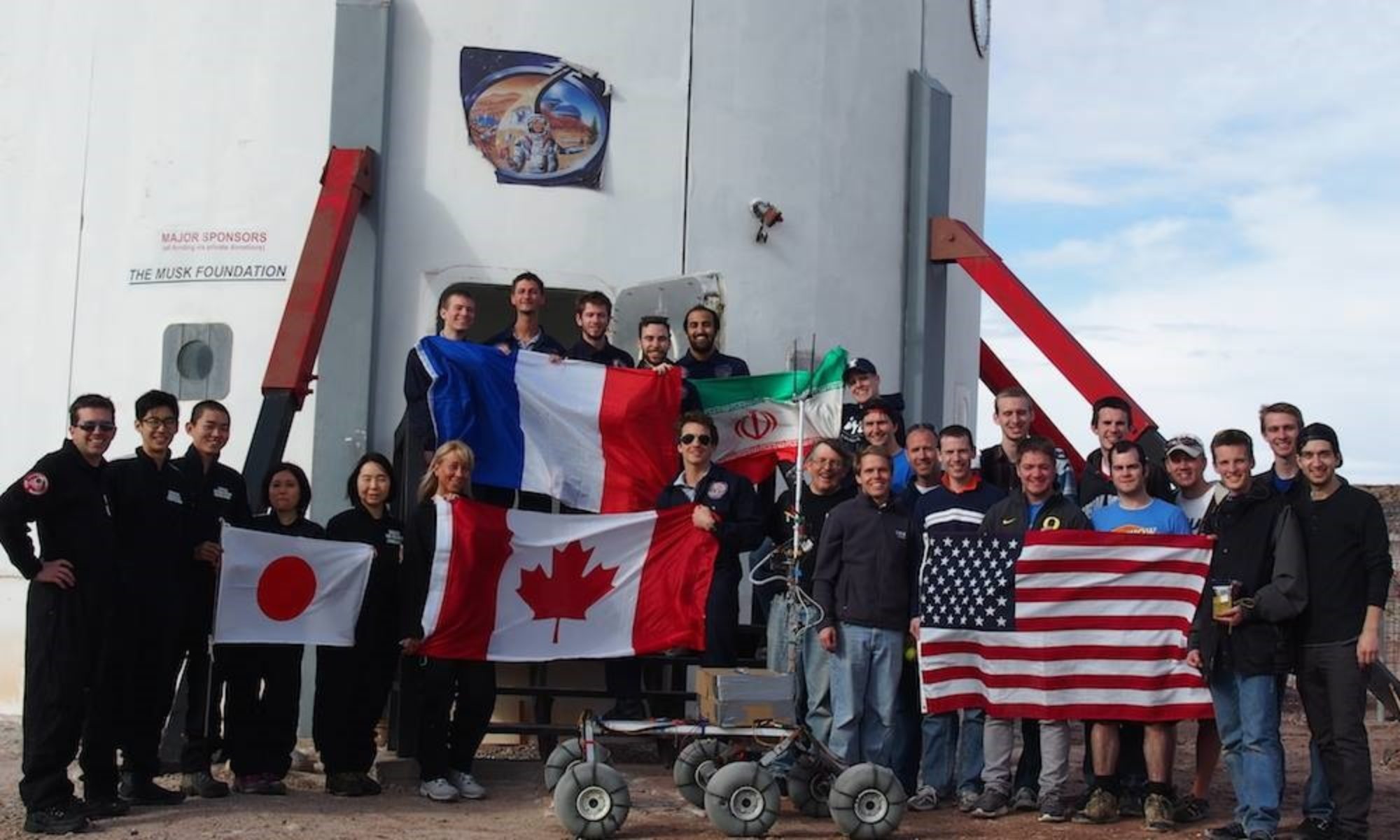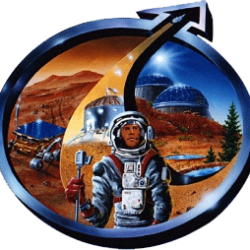Mission Summary
Mission: 315 (Phoenix)
Dates: April 20 – May 3, 2025
Author: David Laude (Commander)
Being a Mars Society crew, we had nearly no previous knowledge of one another, making for an unknown compatibility outcome. As the Zoom meetings progressed it became apparent that this crew could work together in harmony and become friends along the way. Over the course of months, the crew was informed, guided, and educated by the experienced Commander. In the end, with the crew’s diligent work, everything paid off in the form of a fully successful and pleasant mission for all.
The crew is composed of Crew Engineer Michael Andrews, who works in aerospace logistics and is a veteran of the Mars Arctic Research Station; Health and Safety Officer Urban Koi, who is a Space Systems Engineer and student of Space Medicine, and while at the MDRS received a grant from NASA for a project where she is PI; Crew Artist Tim Gagnon, who designed many of the patches for Space Shuttle crews; Senior Editor Elena Saavedra Buckley from Harper’s Magazine as our Crew Journalist; and Commander Dave Laude, on his 6th MDRS assignment and who has previously been Engineer, Executive Officer, Journalist, and Commander. Our Crew Journalist will write a lengthy article for Harper’s Magazine about our mission that will be published later this year. We had nine research projects in total to perform.
“Also Sprach Zarathustra” ("Thus Spoke Zarathustra") by Richard Strauss in the late 19th century and made famous by the 1968 movie “2001: A Space Odyssey,” was the first music piece heard while awaiting depressurization in the airlock when the mission commenced shortly after noon on April 21st. Our Journalist was the first of us to set foot on this dusty red globe making its way around an orbit not the least affected by our meager presence on this world. Other music pieces were played on subsequent EVAs, helping to pass the 5 minute air lock time intervals. With no sound those 5 minutes seemed like 20.
Since most crew members had never traversed the analog Martian regolith before, it was especially important to familiarize themselves with the procedures of the MDRS Campus. During the beginning of the mission, the crew became acquainted with the expected duties of their roles, way around the campus, use of radios, and operation of the EVA suits and rovers.
The Phoenix Crew quickly became accustomed to their Martian home, as the sols gradually became more habitual and routine. Mornings started with coffee, breakfast, and then the 8:00 AM daily planning meeting. By 9:00-9:30 we had the first EVA of the day started, then lunch, followed by afternoon EVAs. Arrivals to the hab after an EVA were frequently greeted by the smell of baking bread or dinner cooking. We were so fortunate to have three talented chefs who made a variety of great dinners from mostly freeze dried food. The Commander while on Zoom spoke of the great food possibilities with freeze dried, and he even submitted some photos of past meals, but the crew was still pleasantly surprised over the outcomes. The chefs made use of micro-greens, herbs, and cherry tomatoes from the Greenhab.
Here is a list of our interesting and diverse projects by title. For more detail, see the many other mission project reports.
-Methodology for Extending Mobility Range on Mars
-Essay for Harper’s Magazine
-3D Mapping of Samples
-Examining Oyster Mushroom Growth in a Martian Greenhouse Environment
-Evaluating Drone Piloting During EVA on Mars
-Measuring Soil Desiccation Patterns Near the MDRS
-100cameras Method: Photography as a Tool to Mitigate Psychological Stress in Space
-Illustrating a Mars Analog Mission as an artist.
-EVA Connectivity Kit
The entire crew took a special liking to the Commander’s “Methodology for Extending Mobility Range on Mars” project, as the object of the range extension was a massive monolith sitting on a broad flat area. It was extremely unusual in appearance and appeared to change color from black to light colored like its background which tended to hide it. This could at best be seen in the far distance with the naked eye, but the project provided the means to get within about a kilometer of it by drone after driving rovers as far as possible, walking towards it, and then releasing the drone brought by the HSO. The closest photo of the Monolith reminded the Commander of a bird, with wings spread and head held high—perhaps a pose our Phoenix could do and thus was named the Phoenix Monolith. This mysterious object will somehow be a subject of another crew with our Commander.
Some evenings we had a few hours of free time and watched Moonbase 8 mini-series. The Commander brought some historical technological artifacts from the 20th century for a show and tell that included magnetic tapes, punch cards, electron tubes and discrete transistor circuit boards. One night he played his MP3 recording of his “Sunrise from Olympus Mons” opus (music).
As in any remote station, there were maintenance activities that included fixing EVA suits and batteries, dealing with power interruptions, broken tunnel zip ties from wind damage, and more. The engineer made sure that the Hab was functioning nominally by monitoring and emptying the toilet, calculating water levels, and inspecting the station’s facilities in the midst of uncertain power supply.
By any standard the mission was a complete success, if not a great success. CNBC sent a videographer for a special project to be shown on public media regarding human’s readiness for a Mars expedition. Sadly, the mission ended in intense preparation to leave this unique experience and place, completely upsetting and ending sim. A feast at the local Duke’s Slickrock Grill in downtown Hanksville celebrated the success. Fortunately for the Commander, another mission has been approved with him one year from now on Crew 335, and the Crew Engineer will soon be headed back to Flashline for a week of renovation and maintenance.

